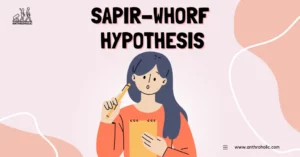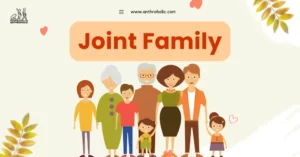AI Answer Evaluation Platform Live Now. Try Free Answer Evaluation Now
Non-Human Communication
Communication is a fundamental aspect of human existence, allowing us to express thoughts, emotions, and intentions. However, humans are not the only beings that engage in communication. Non-human creatures, ranging from animals to plants, exhibit diverse and complex communication systems that differ significantly from human language. Non-human communication is a fascinating area of study that delves into the complex world of how animals convey information to one another.

1. Animal Communication
1.1 Vocalizations and Sounds
- Animals employ a wide range of vocalizations to convey messages.
- Birds utilize songs and calls to communicate territorial boundaries, mating availability, and warnings.
- Mammals use vocalizations such as roars, growls, and howls to establish dominance, communicate distress, and locate mates.
- Insects and amphibians produce unique sounds to attract mates or warn predators.
1.2 Visual Communication
- Body language and visual displays play a crucial role in animal communication.
- Facial expressions, postures, and gestures convey social status, intentions, and emotional states.
- Display of colorful plumage, patterns, or signals serve as visual cues for mating and species recognition.
1.3 Chemical Communication
- Animals release chemical substances called pheromones to communicate.
- Pheromones signal reproductive readiness, mark territory boundaries, and coordinate group behavior.
- Ants and bees use chemical trails to guide others to food sources or indicate threats.
2. Plant Communication
2.1 Chemical Signaling
- Plants communicate through the release of volatile chemicals, known as allelochemicals.
- These chemicals can signal the presence of predators or herbivores, prompting nearby plants to activate defense mechanisms.
- Some plants emit scents to attract pollinators or repel harmful insects.
2.2 Root Communication
- Underground, plant roots engage in communication via mycorrhizal networks.
- Mycorrhizal fungi create connections between plants, enabling the exchange of nutrients, water, and even warning signals.
- Through these networks, plants can share resources, warn of impending threats, and facilitate mutual survival.
3. Non-Verbal Communication in Humans
3.1 Facial Expressions and Body Language
- Humans rely heavily on non-verbal cues to convey emotions and intentions.
- Facial expressions, eye contact, hand gestures, and posture play vital roles in communication.
- Non-verbal signals can express empathy, sincerity, dominance, or submission.
3.2 Touch and Haptic Communication
- Physical touch is a powerful means of conveying emotions and establishing connections.
- Hugs, handshakes, and pats on the back communicate comfort, support, and friendship.
- Haptic communication plays a significant role in parent-child bonding and intimate relationships.
3.3 Art and Symbolism
- Humans utilize art, symbols, and metaphors to communicate abstract concepts and emotions.
- Paintings, sculptures, and music convey a wide range of messages and evoke profound emotional responses.
- Symbolic language, such as traffic signs or emojis, simplifies communication and transcends linguistic barriers.
4. The Significance of Non-Human Communication
4.1 Environmental Adaptation
- Non-human communication systems enable species to adapt to their environments effectively.
- Animal vocalizations, plant chemical signaling, and mycorrhizal networks facilitate survival and resource allocation.
- Efficient communication within species promotes group coordination and increases chances of successful reproduction.
4.2 Inter-Species Relationships
- Non-human communication fosters interactions between different species.
- Predators communicate their presence, allowing prey species to adapt defensive strategies.
- Symbiotic relationships rely on communication between species to coordinate mutualistic behaviors.
4.3 Insights for Human Communication
- Studying non-human communication provides valuable insights into the evolution and mechanics of communication itself.
- By observing animal communication, researchers can gain a deeper understanding of the universal principles and mechanisms that underlie all forms of communication.
- Non-human communication can inspire new approaches to human communication, offering alternative perspectives and strategies for effective interaction.
- Exploring the complexities of non-human communication systems can help us challenge anthropocentric views and broaden our understanding of what constitutes meaningful communication.
5. Ethical Considerations and Conservation
5.1 Ethical Implications
- Recognizing the existence and significance of non-human communication raises ethical questions regarding our treatment of other species.
- Acknowledging their ability to communicate necessitates a more empathetic and respectful approach towards non-human creatures.
- Ethical considerations extend to the impact of human activities on non-human communication systems, such as noise pollution affecting animal vocalizations or habitat destruction disrupting plant communication networks.
5.2 Conservation Efforts
- Understanding non-human communication is crucial for conservation efforts and preserving biodiversity.
- Protecting habitats and ecosystems ensures the preservation of intricate communication networks.
- Conservation initiatives should consider the impact of human actions on non-human communication systems and work towards minimizing disruptions.
Conclusion
Non-human communication systems are diverse, complex, and essential for the survival and well-being of various species. From animal vocalizations and visual displays to plant chemical signaling and mycorrhizal networks, these intricate communication mechanisms serve critical functions in adaptation, social organization, and inter-species relationships. Exploring non-human communication expands our understanding of communication as a whole and provides insights for human communication practices. Furthermore, recognizing and respecting non-human communication systems have ethical implications and necessitates conservation efforts to protect these invaluable systems. By delving into the world of non-human communication, we gain a deeper appreciation for the rich tapestry of communication in the natural world and the interconnectivity of all living beings.



